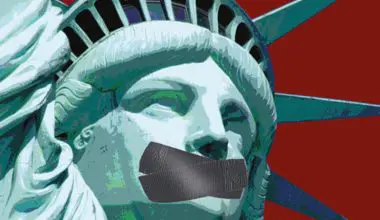AT a “town hall” appearance in New Hampshire last October, Democrat presidential candidate Hillary Clinton told her audience that the Australian approach to gun regulation policies was “worth looking at” and “worth considering.”
“The Australian government, as part of trying to clamp down on the availability of automatic weapons, offered a good price for buying hundreds of thousands of guns, and then they basically clamped down going forward in terms of having, you know, more of a background-check approach, more of a permitting approach.”
By “automatic weapons,” she presumably meant “semiautomatic weapons,” but as with many other advocates of banning so-called “assault weapons,” Clinton evidently prefers her audience to ignore the difference between semi and fully automatic firearms.
That, though, is not the worst of the deceptions in that sentence. She also did not bother to mention that the “good price for buying hundreds of thousands of guns” wasn’t negotiable for the “seller.” The “sale” was mandatory, and owners of any semiautomatic rifles or shotguns (and indeed even pump-action shotguns) were forced by the government to surrender them.
Commerce is a mutually voluntary act. Both buyer and seller believe the transaction suits their respective purposes. If not, one or the other party would reject it. That is not what happened in Australia. The “buyer” set the price and told the “seller” he had to accept it. If he refused, the government’s hired muscle (probably armed with the very type of firearm the government insisted on “buying”) would come and take the guns by force. If the “seller” resisted, he faced the very real possibility of death at the hands of the government.
To put it less delicately, if what each Australian gun owner was forced by the government to do is a sale, then any rape victim whose assailant tosses them a dollar after the rape is a prostitute.
But that’s not what Clinton wanted to talk about. Instead, she compared the possibility of an American gun “buy-back” to the Obama Administration’s “Cash for Clunkers” program, in which owners of older, less fuel efficient, less environmentally friendly cars could sell them to the federal government for credit toward the purchase of a new car.
The theory was that the benefits would be multifold: gasoline would be conserved, environmentally harmful emissions would be reduced, and the reeling U.S. auto industry would be stimulated, as program participants spent the money given to them for their “clunkers” to buy new cars.
Whether or not that theory had much to do with reality, and whether or not, indeed, there is any Constitutionally enumerated power by which the federal government has the authority to use we the people’s tax revenue for such purposes is a discussion for another time.
What is relevant here is that Clinton is clearly not looking for a way to stimulate the gun industry, and is certainly not trying to induce Americans to upgrade the firepower in their gun safes. Her intent was very nearly the exact opposite.
Gun rights advocates, of course, had something to say about Clinton’s admiration for the Australian plan. The response was sufficiently heated that Clinton campaign strategists felt compelled to hastily backpedal away from the gun confiscation precipice. As reported in The Hill:
Asked during a Monday interview if Clinton was suggesting the confiscation of guns, Clinton communications director Jen Palmieri said, “Of course not.
“What she was referring to is places where there have been mass shootings and the countries have done something to act on it,” Palmieri said on MSNBC’s Andrea Mitchell Reports.
What Palmieri failed to address was that the “something to act on it” done by the one country Clinton mentioned was indeed the confiscation of hundreds of thousands of guns (which, in the U.S., would scale up to scores of millions of guns).
Are we really to believe that Clinton was unaware of that when she touted the Australian measure? Even if so (a very big “if”), are we to be comfortable with Clinton’s competence to set gun policy when she claims not to support the central element of the gun restriction plan she praised so lavishly?
Of course not.
Clinton was fully aware that the Australian measure was mass gun confiscation, and she thinks that approach is “worth considering” for the U.S. Fine. “Consider” it, Clinton. But then consider—and consider well—what the reality would look like. Thousands—perhaps tens of thousands, or hundreds of thousands, or even millions—of Americans would sooner use their semiautomatic firearms than surrender them.
And by “use,” I mean use against the confiscators.
And about those confiscators: How many would decide to enforce such a “law,” in defiance of the Constitution (not to mention simple human decency)? Of those who would, how many would not change their minds when they saw their brother and sister officers (and/or military service members) killed trying to disarm their countrymen?
Not enough for your purposes, Clinton. Not nearly enough.
If the government tries to force citizens to “sell” our guns, the price will not be cash, but blood. And the confiscationists don’t have enough of that to afford it.


